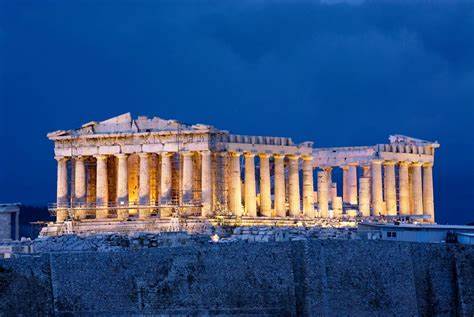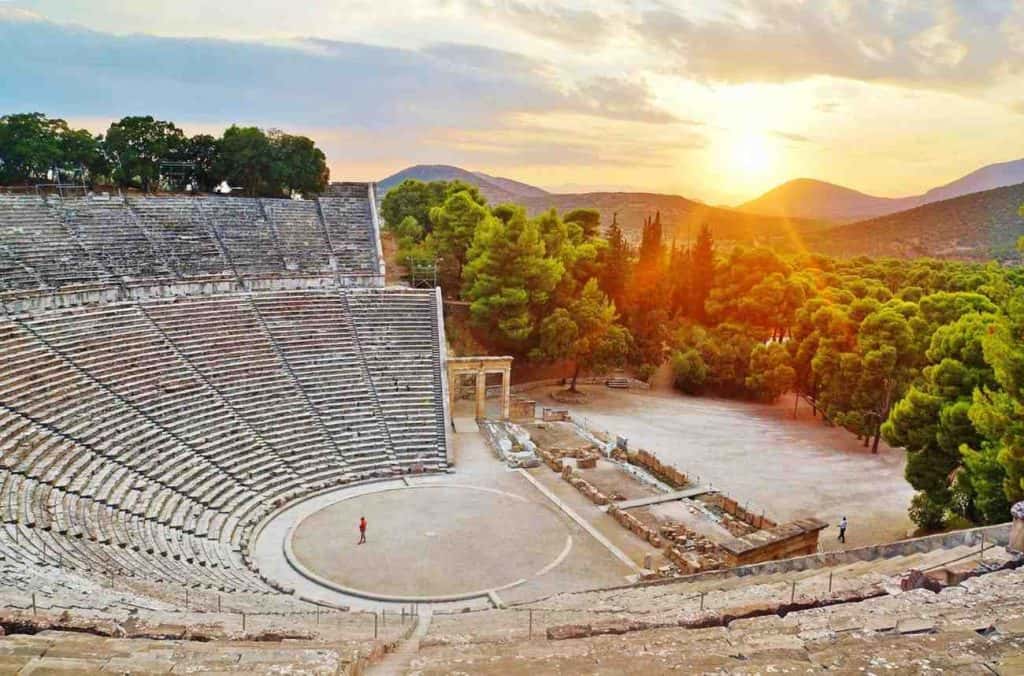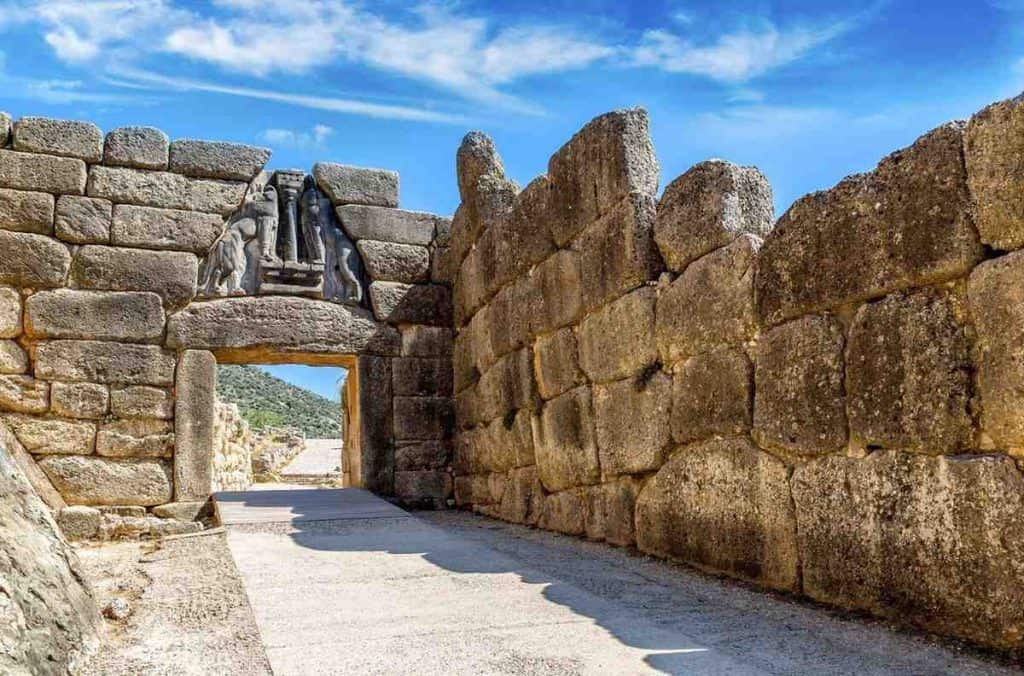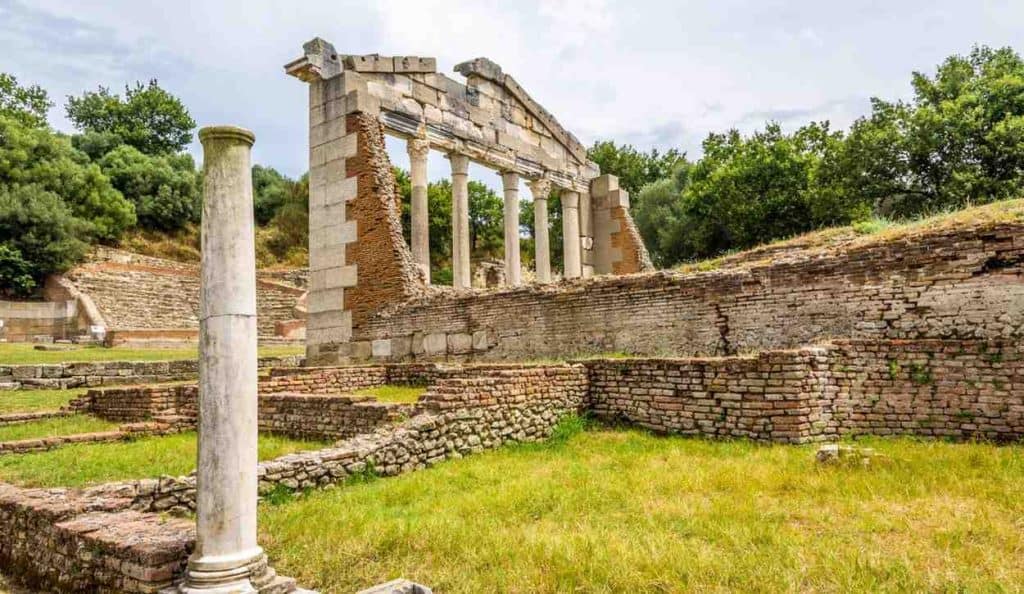When you step into Greece, you’re not just visiting a country — you’re walking through thousands of years of history. Few places on earth preserve their past so vividly. From temples that once hosted Olympian gods to theaters where Aristotle himself might have sat, Greece’s ancient sites are living testaments to human ingenuity.
If you love history, mythology, or simply want to be wowed, here are seven ancient Greek sites still standing today that you absolutely must see.
1. The Acropolis of Athens

- Built: 5th century BC
- Famous for: The Parthenon, Temple of Athena Nike, Erechtheion
- Best for: First-time visitors to Greece
The Acropolis isn’t just Athens’ crown jewel — it’s one of the most important ancient sites in the world. Perched high above the city, this fortified citadel was the heart of classical Athens, built during the Golden Age of Pericles.
✨ Highlights:
- The Parthenon – Dedicated to Athena, patron goddess of Athens.
- The Erechtheion – Known for its Porch of the Caryatids, where columns are carved as female figures.
- Temple of Athena Nike – A small but elegant temple celebrating victory.
💡 Tip: Go early in the morning (before 9 AM) or late afternoon to avoid crowds and harsh sun. Buy the combo ticket (€30) which includes the Acropolis and several other archaeological sites in Athens.
2. Delphi – The Sanctuary of Apollo

- Built: 8th century BC onwards
- Famous for: The Oracle of Apollo
- Best for: Travelers into myth, spirituality, and scenic landscapes
In the shadow of Mount Parnassus, Delphi was once believed to be the center of the world. Pilgrims came here for centuries to consult the Oracle of Apollo, who delivered cryptic prophecies shaping Greek politics and war.
✨ Highlights:
- Temple of Apollo – Where the oracle spoke.
- The Treasury of the Athenians – Built after the Battle of Marathon.
- The Ancient Theatre – With a panoramic view over the valley.
💡 Tip: Combine your visit with the Delphi Archaeological Museum, which houses the bronze Charioteer of Delphi — one of the finest ancient statues ever discovered.
3. Olympia – Birthplace of the Olympic Games

- Built: 8th century BC onwards
- Famous for: Original Olympic Games dedicated to Zeus
- Best for: Sports enthusiasts and history lovers
Long before modern stadiums, Olympia hosted the Olympic Games (first held in 776 BC). For over 1,000 years, athletes from across the Greek world gathered here to honor Zeus with sport, competition, and spectacle.
✨ Highlights:
- Temple of Zeus – Once home to one of the Seven Wonders of the Ancient World (the massive gold-and-ivory statue of Zeus).
- Temple of Hera – Where the Olympic flame is still lit today before each modern Games.
- Stadium – The original running track where athletes competed.
💡 Tip: Don’t miss the Olympia Archaeological Museum, which houses sculptures from the Temple of Zeus and rare artifacts.
4. Epidaurus – The Ancient Theatre

- Built: 4th century BC
- Famous for: Perfect acoustics and architecture
- Best for: Culture seekers and performance enthusiasts
Nestled in the Peloponnese, Epidaurus was a sanctuary of Asclepius, the god of healing. But today, it’s most famous for its ancient theatre, a masterpiece of classical design. Even a whisper on stage can be heard perfectly at the top rows — a marvel of ancient engineering.
✨ Highlights:
- The Theatre of Epidaurus – Still used for performances during the Athens & Epidaurus Festival.
- Sanctuary of Asclepius – Healing temples and baths where ancient medicine thrived.
💡 Tip: Visit in summer to catch a live ancient Greek play under the stars. Tickets sell fast, so book early.
5. Knossos – The Minoan Palace

- Built: Around 1900 BC (rebuilt after earthquakes)
- Famous for: Palace of King Minos, Minotaur legend
- Best for: Myth lovers and Crete explorers
Long before Athens and Sparta, the Minoans built Europe’s first advanced civilization on Crete. Their capital, Knossos, is a sprawling palace complex filled with mysteries. Linked with the legend of the Labyrinth and the Minotaur, Knossos combines archaeology and mythology in one unforgettable site.
✨ Highlights:
- Throne Room – Believed to be used for ceremonial rituals.
- The Grand Staircase – Showing advanced Minoan architecture.
- Frescoes – Brightly painted depictions of dolphins, dancers, and bulls.
💡 Tip: Visit early in the morning. Combine your trip with the Heraklion Archaeological Museum, which displays most of Knossos’ original frescoes and treasures.
6. Mycenae – The Kingdom of Agamemnon

- Built: 16th century BC
- Famous for: The Lion Gate, Homer’s epics
- Best for: Fans of the Trojan War legends
In the hills of the Peloponnese lies Mycenae, one of the great Bronze Age civilizations of Greece. Mentioned by Homer in the Iliad, Mycenae was the kingdom of Agamemnon, leader of the Greeks during the Trojan War.
✨ Highlights:
- The Lion Gate – Monumental entrance carved with lion reliefs.
- Treasury of Atreus – A massive beehive tomb, also known as the “Tomb of Agamemnon.”
- Cyclopean Walls – Gigantic stone walls said to be built by mythical giants.
💡 Tip: Mycenae is just an hour’s drive from Epidaurus, so you can see both in one day.
7. Delos – The Sacred Island

- Built: 10th century BC onwards
- Famous for: Birthplace of Apollo and Artemis
- Best for: Island-hoppers interested in history
Tiny Delos, near Mykonos, is one of the most sacred islands in Greece. In mythology, it was the birthplace of Apollo and Artemis. In antiquity, it was also a wealthy trading hub. Today, it’s an open-air archaeological wonder.
✨ Highlights:
- The Terrace of the Lions – Marble lions guarding the sacred way.
- The House of Dionysus – With stunning floor mosaics.
- The Sanctuary of Apollo – The heart of Delos’ spiritual life.
💡 Tip: Boats depart daily from Mykonos. There’s no accommodation on Delos, so it’s a half-day trip.
🗺️ Quick Comparison Table
| Site | Location | Built | Famous For | Best For |
|---|---|---|---|---|
| Acropolis | Athens | 5th c. BC | Parthenon & temples | First-time visitors |
| Delphi | Central Greece | 8th c. BC | Oracle of Apollo | Myth & spirituality |
| Olympia | Peloponnese | 8th c. BC | Original Olympic Games | Sports & history |
| Epidaurus | Peloponnese | 4th c. BC | Ancient theatre | Culture lovers |
| Knossos | Crete | 1900 BC | Minoan civilization | Myth & archaeology |
| Mycenae | Peloponnese | 16th c. BC | Homeric legends & ruins | Trojan War fans |
| Delos | Near Mykonos | 10th c. BC | Sacred island of Apollo | Island-hopping travelers |
✨ Final Thoughts
These seven ancient sites are not just relics of the past — they’re living monuments that shaped Western civilization. Visiting them feels like stepping into a time machine where gods, heroes, philosophers, and kings once walked.
👉 Whether you’re tracing the footsteps of Socrates at the Acropolis, exploring the Lion Gate at Mycenae, or standing on sacred Delos, you’ll see why Greece remains the epicenter of history and myth.

